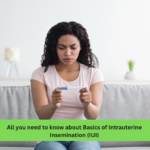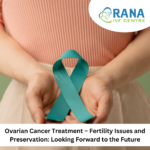Important Physical Signs That You Are Fertile
What is ovaluation?
During the ovulation phase of the menstrual cycle, a mature egg is released from the ovary and is ready for fertilization. Every month, a woman releases one of her millions of immature eggs, one at a time. A fertilized egg exits the uterus and goes to the fallopian tube during ovulation.

However, not everyone’s ovulation occurs on day 14 of their monthly cycle. Ovulation typically occurs between days 10 and 19 of the process or 12 to 16 days before the next period. There are 28 to 32 days in a typical menstrual cycle. In healthy women, ovulation happens 14 days before the beginning of their period.
When are you most fertile?
Keeping track of a woman’s ovulation cycle and the time of year when she is most fertile is an integral part of prenatal care.
Fertility is at its peak during the five days preceding and the following ovulation and during ovulation itself. During those six days, you’re most fertile two to three days before and on the day of ovulation. Your egg is viable for 12 to 24 hours after its release, but you can’t conceive again until your next menstrual period. You can identify your most fertile days using an ovulation calculator or fertility calendar.
What are the signs of ovaluation?
A woman’s body goes through many ovulation symptoms, but she cannot identify them. The following list of common ovulation signs may assist you in determining when ovulation will take place.
Changes in cervical mucus
Sperm can swim to an egg during ovulation thanks to egg-white-like cervical mucous. Cervical mucus changes differ from woman to woman. Insert a clean finger into the vagina, remove some mucus, and extend the discharge. Sticky, stretchy, or wet and slippery means you’re fertile.
An enhanced ability to detect odors.
An increased sense of smell during the latter half of the typical menstrual cycle can indicate ovulation in particular women.
Pain or discomfort in the breast area
A woman’s breasts and nipples can be tender and sensitive as an indicator of her ovulation cycle.
Pelvic or lower abdominal pain may be felt during this time.
If you feel a tingling sensation in your lower belly, it’s a good sign that you’re about to ovulate.
Spots of discharge or spotting
During ovulation, it is usual to see brown discharge or spotting. A tiny amount of bleeding occurs during the maturation and growth of the follicle that surrounds and protects the egg.
Cervical changes
The cervix widens and opens up during ovulation.
Conclusion
Cervical mucus changes, an elevated basal body temperature, mood swings, and abdominal cramps are all symptoms that you are fertile. Many women may be ignorant of basic information on reproductive health.





No Comments